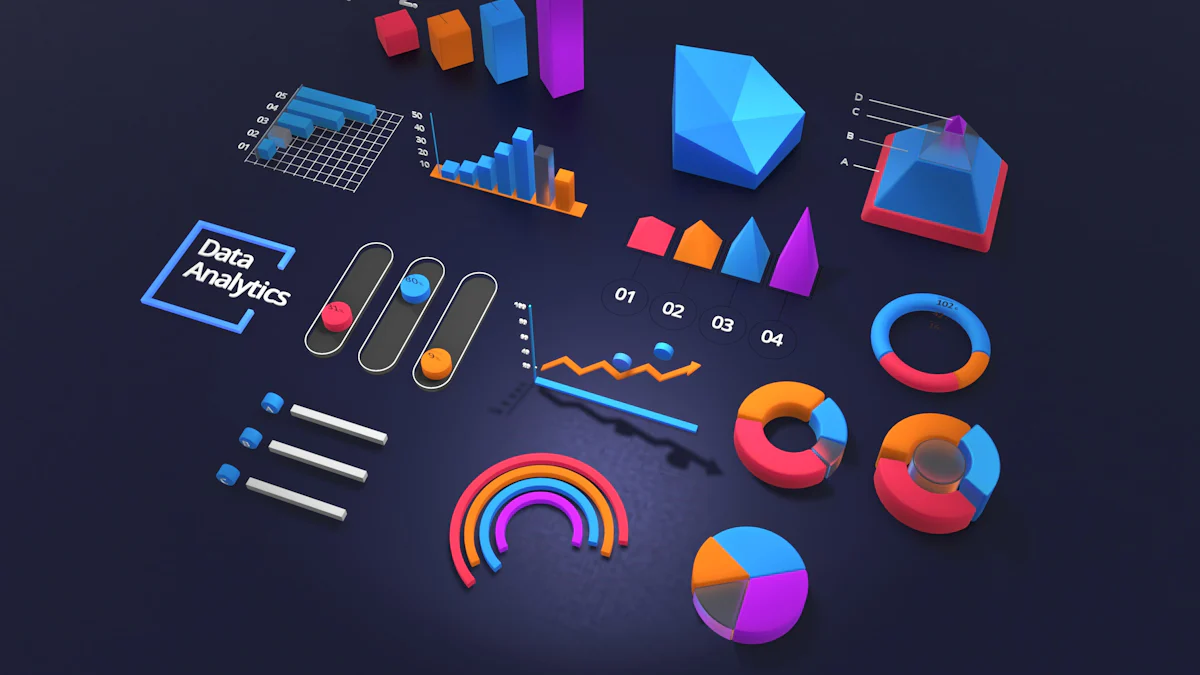Credit scoring evaluates an individual's creditworthiness based on various financial behaviors. Traditional methods rely heavily on historical data and manual processes, often leading to delays and inaccuracies. Real-time data processing has emerged as a transformative approach in credit scoring. By leveraging up-to-date information, real-time data processing enables instant lending decisions and more accurate risk assessments. This method enhances efficiency and reliability, providing significant benefits for both lenders and borrowers.
Challenges of Traditional Credit Scoring Methods
Limited Data Sources
Reliance on Historical Data
Traditional credit scoring methods depend heavily on historical data. Financial institutions typically use past financial behaviors to predict future creditworthiness. This approach often overlooks current financial situations. As a result, the assessment may not accurately reflect an individual's present ability to repay loans.
Lack of Real-time Updates
Traditional methods lack real-time updates. Financial institutions update credit scores periodically, not continuously. This delay can lead to outdated information being used for credit decisions. Consequently, lenders may either overestimate or underestimate the risk associated with a borrower.
Inaccuracies and Delays
Time-consuming Processes
Traditional credit scoring involves manual processes. Financial institutions must collect, verify, and analyze data manually. This process takes time and can lead to significant delays in credit decision-making. Borrowers often experience frustration due to these prolonged waiting periods.
Potential for Outdated Information
Manual processes also increase the risk of using outdated information. By the time data is collected and analyzed, the borrower's financial situation might have changed. This lag can result in inaccurate credit assessments, affecting both lenders and borrowers negatively.
Risk of Fraud and Errors
Manual Data Entry Issues
Manual data entry poses another challenge. Human error during data entry can lead to inaccuracies in credit reports. These errors can significantly impact a borrower's credit score, leading to unfair credit decisions.
Vulnerability to Manipulation
Traditional methods are also vulnerable to manipulation. Fraudsters can exploit manual processes to alter data and create false credit profiles. This manipulation increases the risk of lending to untrustworthy borrowers, thereby exposing financial institutions to potential losses.
By addressing these challenges, real-time data processing offers a more accurate, efficient, and reliable approach to credit scoring.
Benefits of Real-time Data Processing in Credit Scoring
Enhanced Accuracy
Continuous Data Updates
Real-time data processing ensures continuous updates to credit scores. Financial institutions can access the most current financial behaviors of borrowers. This approach allows for more accurate assessments of creditworthiness. Up-to-date information reduces the risk of outdated data influencing lending decisions.
Comprehensive Data Analysis
Real-time data processing enables comprehensive analysis of various data points. Financial institutions can evaluate multiple factors such as payment behaviors, geolocation, and transaction histories. This holistic view provides a more accurate picture of a borrower's creditworthiness. AI-powered models can quickly adapt to new trends and data, ensuring relevant credit scoring criteria.
Improved Efficiency
Faster Decision-making
Real-time data processing significantly speeds up credit decision-making. Financial institutions can process large amounts of data instantly. This capability allows for immediate lending decisions. Borrowers benefit from quicker responses to loan applications. Faster decision-making enhances the overall efficiency of the credit scoring process.
Automated Processes
Automation plays a crucial role in real-time data processing. Financial institutions can automate the collection, verification, and analysis of data. Automated processes reduce the need for manual intervention. This reduction minimizes human error and speeds up the credit evaluation process. Automation ensures consistent and reliable credit assessments.
Increased Reliability
Reduced Risk of Fraud
Real-time data processing reduces the risk of fraud in credit scoring. Automated systems can detect anomalies and suspicious activities instantly. Financial institutions can identify and mitigate fraudulent behaviors more effectively. This capability enhances the reliability of credit assessments. Reduced fraud risk protects both lenders and borrowers.
Consistent Monitoring
Consistent monitoring is another key benefit of real-time data processing. Financial institutions can continuously track borrowers' financial behaviors. This ongoing surveillance allows for timely updates to credit scores. Consistent monitoring ensures that credit assessments remain accurate and relevant. This approach enhances the overall reliability of the credit scoring system.
Practical Applications of Real-time Data Processing in the Financial Industry
Real-time Credit Risk Assessment
Instant Loan Approvals
Real-time data processing enables financial institutions to approve loans instantly. Lenders can access up-to-date information about a borrower's financial status. This capability allows for immediate evaluation of creditworthiness. Borrowers receive loan decisions without delays, enhancing their overall experience. Instant loan approvals reduce the waiting period, making the lending process more efficient.
Dynamic Credit Limits
Financial institutions can adjust credit limits dynamically using real-time data processing. Lenders monitor borrowers' financial behaviors continuously. This approach allows for timely adjustments to credit limits based on current financial activities. Borrowers benefit from credit limits that reflect their latest financial status. Dynamic credit limits provide a more accurate and flexible credit management system.
Personalized Financial Products
Tailored Loan Offers
Real-time data processing allows lenders to offer tailored loan products. Financial institutions analyze various data points to understand borrowers' needs and preferences. This analysis enables the creation of customized loan offers that match individual financial situations. Borrowers receive loan products that cater to their specific requirements. Tailored loan offers enhance customer satisfaction and loyalty.
Customized Interest Rates
Lenders can determine interest rates based on real-time data analysis. Financial institutions evaluate borrowers' financial behaviors and risk profiles continuously. This evaluation allows for the adjustment of interest rates to reflect current creditworthiness. Borrowers benefit from interest rates that are fair and relevant to their financial status. Customized interest rates ensure a more personalized and equitable lending experience.
Enhanced Customer Experience
Faster Service Delivery
Real-time data processing significantly speeds up service delivery in the financial industry. Financial institutions can process large volumes of data instantly. This capability allows for quicker responses to customer inquiries and requests. Borrowers experience faster service delivery, improving their overall satisfaction. Efficient service delivery enhances the reputation of financial institutions.
Proactive Customer Support
Lenders can provide proactive customer support using real-time data processing. Financial institutions monitor borrowers' financial activities continuously. This monitoring allows for the early detection of potential issues or opportunities. Lenders can offer timely advice and support to borrowers based on their current financial status. Proactive customer support helps in building strong relationships between lenders and borrowers.
Real-time data processing in credit scoring offers several key benefits. Enhanced accuracy results from continuous data updates and comprehensive analysis. Improved efficiency comes from faster decision-making and automated processes. Increased reliability stems from reduced fraud risk and consistent monitoring.
Future advancements in AI and machine learning promise even more precise credit assessments. These technologies will enable personalized lending solutions and better regulatory compliance.
Financial institutions should adopt real-time data processing technologies. This adoption will lead to more accurate, efficient, and reliable credit scoring systems.






